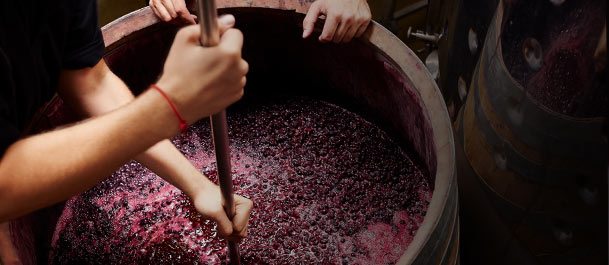The Wine Guy
Chile, located on the Pacific coast of South America, is a long, narrow country on the other side of the Andes mountains from Argentina; its Andean foothills, in addition to providing abundant fruit and vegetable crops for itself and much of the Western Hemisphere, also provide some of the “best of the West” wines, too.
Chile is known for producing wines of exceptional value, but that’s not to say Chilean wines don’t also include outstanding bottles to boast about. As a new world wine region, with 2,700 miles of coastline along the frigid Pacific Ocean, Chile produces wines that are both fruit-forward factor and herbaceous, similar to French wine. It’s no wonder then, that French wine producers from Bordeaux have invested heavily in the region, making it their home away from home.
Cabernet Sauvignon is the most widely-planted grape variety in Chile. Chilean Cabernet Sauvignon typically produces a lighter colored, less tannic style of Cabernet Sauvignon, with juicy flavors of black cherry, plums, smoked bell pepper, and (on some more refined examples) mint and deep blackberry. One of the best up and coming regions is the Colchagua Valley.
It’s been called “The Next Napa”, and with good reason. As the modern Chilean wine industry has matured and come to rely ever more on scientific methods for drawing the best from its exceptional soils and microclimates, it has become apparent that the Colchagua Valley offers exceptional advantages for growers and producers alike. It’s a situation not unlike that of the Napa Valley 50 years ago.
Located about 80 miles southwest of Santiago, the Colchagua Valley is about 75 miles long and averages 22 miles in width. It enjoys a balmy, Mediterranean climate matched in only a few other places on earth. With no smog, the air is exceptionally clear, and the region is noted for its abundant and extraordinarily luminous sunshine. The average annual rainfall, which occurs mostly in the winter months of May to August, is about 24 inches. Humidity is low, and frost is unknown.
Some examples of “the next Napa” wines-
Casa Lapostolle, Grand Selection, 2015, Colchagua Valley, ($12.99), has a full and distinctive nose with notes of plums, cherries and a mocha tone. It has a nice mouthfeel and pleasing finish. Try it with Italian red sauce dishes, roast beef or a good New York strip.
Carmenere, Koyle Royale, Alto Colchagua, 2014, ($29.99),the history of the Undurraga family and Chilean wine dates to 1885, with the newest chapter being estate production of exceptionally crafted wines. The Carménère as an old Bordeaux varietal finding new life in Chile, is a standout here, showing a sense of place along with elegance and minerality. It is the best of all worlds, ready to drink now and put a few in the cellar.
Primus, Alto De Casablanca, 2013, ($15.99), is a red blend that exhibits a lot of similarity to some of the finer Bordeaux-style wines on the market today, but at a value price point. This is a terrific, full-bodied Chilean red wine made from the country’s signature red wine grape, Carmenere. Carmenere is believed to have traveled from Bordeaux, where it was one of the six original grape varieties planted there before the devastation from the root louse Phylloxera in 1867 wiped out all the vines. Chile’s natural protections from this vine louse include the ocean, the Andes mountains and the dessert. Carmenere is named for its color – crimson (carmen). It has some similarities with Merlot but is not the same grape. You’ll notice aromas of dark red fruit and toasty oak, mingled with a dark chocolate edge. Try this one with wine-braised beef or veal chop.
Lastly, if you enjoy Syrah, look to Chile. Syrah is an important grape in Chile and is only just starting to make waves in the wine community. These wines are distinctly more elegant (cool climate) in style and consistently offer up spiced meaty notes along with red or black plummy fruit. Tannins can be bolder in Chilean Syrah, which is one of the reasons this wine has become so intriguing as of late; it also has the potential to age very well.
A really nice example is Montes Alpha Series Syrah 2014, Syrah/Shiraz Colchagua Valley, Rapel Valley, Chile, ($19.99). This one is an Intense purplish-red in color. Abundant blue and red berries on the nose with a predominance of blackberries, blueberries, and cherries as well as a characteristic note of dry-cured Serrano ham along with French oak, which also lends aromas of vanilla and a touch of chocolate. Vibrant and round on the palate with very soft, well-balanced tannins that complement this impeccable Syrah from Colchagua.This wine pairs well with red meats, stir-fried beef, pork chops, spaghetti with Bolognese sauce, and lamb chops.









